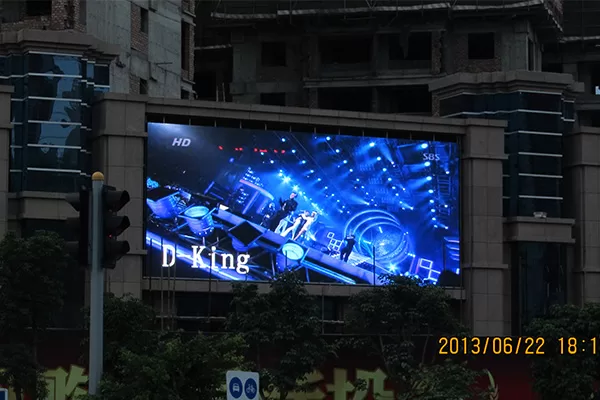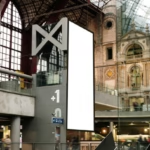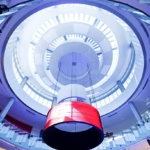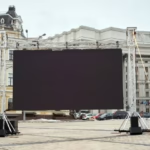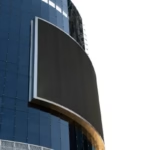La convergence des villes intelligentes et de la publicité numérique
À l'ère des villes intelligentes, l'infrastructure et la technologie fusionnent pour créer un environnement urbain dynamique. Parmi ces innovations, les panneaux d'affichage publicitaire LED se distinguent comme un support visible et percutant pour la communication. Leur rôle est passé de la projection d'image statique aux plates-formes intelligentes et en réseau capables de fournir du contenu très ciblé en temps réel. Pour des entreprises comme D-King, cette évolution représente à la fois une opportunité et un défi: des systèmes de conception qui non seulement fournissent des visuels vifs mais s'intègrent également de manière transparente dans l'écosystème numérique d'une ville.
Comme les villes adoptent une gouvernance basée sur les données, les espaces publics reposent de plus en plus sur les canaux de communication numériques pour se connecter avec les résidents, les visiteurs et les entreprises. Les panneaux d'affichage publicitaire LED ont fait partie intégrante de cette stratégie. Cependant, leur véritable potentiel émerge lorsqu'il est combiné avec des systèmes de gestion en réseau qui permettent un contrôle centralisé, une planification dynamique et un ciblage précis basé sur des données d'audience.
Le passage de la publicité LED traditionnelle à la gestion en réseau
Dans le passé, la publicité LED en plein air a nécessité des mises à jour manuelles ou une intervention sur place. La planification du contenu était inflexible et les campagnes étaient souvent larges plutôt que spécifiques. Cette approche a limité à la fois l'efficacité et l'adaptabilité. La gestion en réseau le modifie entièrement en permettant une télécommande sur des milliers d'écrans d'une seule plate-forme. Les opérateurs peuvent pousser de nouveaux contenus instantanément, ajuster la luminosité en fonction des conditions environnementales et même synchroniser les écrans pour les campagnes coordonnées dans toute une ville.
Par exemple, un panneau d'affichage publicitaire LED dans un quartier commercial peut être mis à jour en quelques minutes pour refléter une vente flash, tandis que les panneaux près d'un stade sportif peuvent afficher des scores en direct et des promotions parrain en temps réel. Cette agilité est impossible avec les systèmes traditionnels. De plus, la gestion en réseau assure une qualité cohérente entre les emplacements, en maintenant l'intégrité de la marque et les normes visuelles.
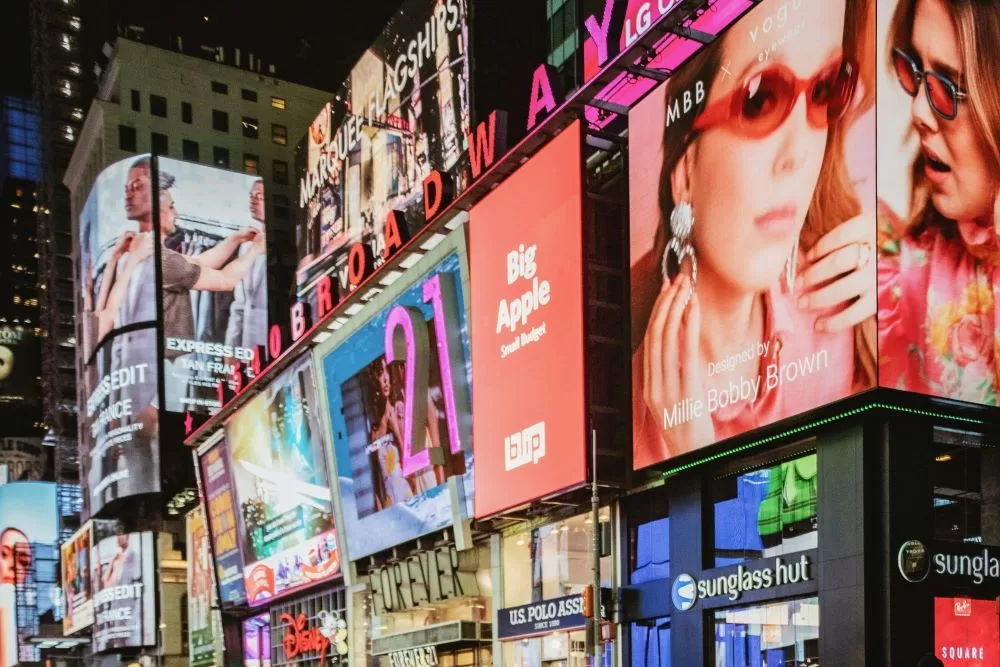
Livraison de précision: cibler le public au bon endroit au bon moment
Les villes intelligentes prospèrent sur la capacité de fournir des informations pertinentes pour le contexte spécifique du temps et du lieu. Les panneaux d'affichage publicitaire LED, lorsqu'ils sont intégrés à l'analyse des données et aux technologies basées sur la localisation, permettent la livraison de précision. Cela signifie qu'une publicité n'est plus seulement diffusée - elle est stratégiquement servie au bon public.
Par exemple, pendant les heures de pointe du matin, les affichages le long des itinéraires de banlieue peuvent montrer des promotions de café ou des mises à jour du transport. Le soir, les mêmes panneaux peuvent mettre en évidence des options de restauration ou des événements de divertissement. Les déclencheurs saisonniers et météorologiques améliorent encore la pertinence. Une tempête de pluie soudaine peut instantanément provoquer des publicités parapluies, tandis qu'une chaude journée d'été peut déclencher des promotions de boissons.
L'avantage pour les annonceurs est clair: la livraison de précision augmente les taux d'engagement et entraîne un retour sur investissement plus élevé. Du point de vue de la gestion de la ville, il garantit également que la communication publique, telle que les alertes d'urgence, atteint le bon public au bon moment.
Le rôle des données dans la planification de contenu intelligente
Au cœur de la livraison de précision se trouvent des données. Les panneaux d'affichage publicitaire LED en réseau s'appuient sur plusieurs sources de données, y compris les profils démographiques, les modèles de trafic, les calendriers d'événements et même les capteurs environnementaux. Ces données sont traitées en temps réel pour déterminer quel contenu doit être affiché, où et quand.
Par exemple, une marque de vente au détail peut utiliser l'analyse du trafic piétonnier pour identifier les heures d'achat de pointe dans des domaines spécifiques. Le système de gestion en réseau peut alors planifier des annonces pour ces moments, garantissant une visibilité maximale. De même, les conseils touristiques peuvent adapter des messages en fonction de l'afflux de visiteurs internationaux pendant les festivals, affichant du contenu en plusieurs langues.
Les plates-formes de contrôle avancées de D-King prennent en charge ces fonctions en intégrant l'analyse des données avec les algorithmes de planification, donnant aux opérateurs un contrôle granulaire des campagnes. Le résultat n'est pas seulement des performances publicitaires plus élevées, mais aussi une meilleure expérience de visualisation pour le public, car ils reçoivent du contenu qui semble pertinent et opportun.
Contrôle centralisé pour les déploiements multi-sites
Dans une ville intelligente, les panneaux d'affichage publicitaire LED sont rarement des installations isolées. Au lieu de cela, ils forment des réseaux interconnectés couvrant des zones commerciales, des centres de transport et des sites publics. Gérer un tel réseau manuellement serait peu pratique. Le contrôle centralisé est donc essentiel.
Grâce à des plates-formes centralisées, les opérateurs peuvent:
Surveillez la santé du système sur tous les écrans.
Ajustez les paramètres tels que la luminosité et le contraste en fonction des conditions locales.
Remplacer ou mettre à jour instantanément les actifs créatifs.
Appliquer des protocoles de sécurité pour protéger contre l'injection de contenu non autorisée.
Pour D-King, fournir ce niveau de gestion centralisée signifie fournir non seulement du matériel mais une solution complète. Leurs systèmes permettent aux villes et aux annonceurs d'exploiter des milliers de panneaux en tant que réseau unifié, garantissant l'efficacité et la réduction des coûts opérationnels.
Intégration avec une infrastructure de ville intelligente
Les panneaux d'affichage publicitaire LED ne sont plus des unités publicitaires autonomes; Ils font partie d'un écosystème numérique plus large. L'intégration avec les appareils IoT, les systèmes de transport public et les outils de surveillance environnementale permettent des fonctionnalités plus riches. Par exemple:
Les écrans peuvent ajuster automatiquement le contenu et la luminosité en fonction des capteurs en lumière du jour.
Les panneaux à proximité des arrêts de bus peuvent afficher des données d'arrivée en temps réel aux côtés des annonces.
Les alertes d'urgence peuvent remplacer instantanément le contenu planifié, en hiérarchiser la sécurité publique.
Cette intégration transforme les panneaux LED des outils publicitaires purs en canaux d'information urbaine polyvalents, en fonctionnant les besoins commerciaux et civiques.
Défis dans la publicité LED en réseau
Bien que les avantages soient substantiels, la mise en œuvre de la gestion en réseau pour Panneaux d'affichage publicitaire LED Dans Smart Cities présente des défis. Les problèmes de confidentialité des données nécessitent une conformité stricte avec les réglementations, en particulier lors de l'utilisation de l'analyse d'audience. La sécurité du réseau est également critique, car un accès non autorisé pourrait perturber les opérations ou compromettre l'intégrité du contenu.
De plus, des conditions environnementales variables, de la chaleur extrême aux fortes pluies, nécessitent une ingénierie matérielle robuste. D-KING aborde ces problèmes en concevant des enceintes résistantes aux intempéries, en utilisant des composants de qualité industrielle et en mettant en œuvre des protocoles de communication sécurisés et cryptés.
Conclusion: les réseaux d'affichage LED comme impulsion de la ville intelligente
Dans le contexte des villes intelligentes, les panneaux d'affichage publicitaire LED représentent plus que de la publicité - ils font partie de l'infrastructure de communication de la ville. La gestion en réseau garantit que ces panneaux fonctionnent efficacement, tandis que la livraison de précision garantit que le bon contenu atteint le bon public au bon moment.
Pour D-KING, mener dans ce domaine signifie combiner la technologie d'affichage avancée avec des systèmes de contrôle intelligents qui s'intègrent parfaitement dans l'environnement de la ville intelligente. Alors que les centres urbains continuent d'évoluer, le rôle des panneaux d'affichage publicitaire LED se développera, devenant un support central pour le commerce et l'engagement public.
Grâce à la gestion en réseau et à la livraison de précision, les villes peuvent transformer leurs espaces publics en centres de communication dynamiques, réactifs et efficaces - en gardant les résidents informés, les entreprises visibles et la vie urbaine connectée.

